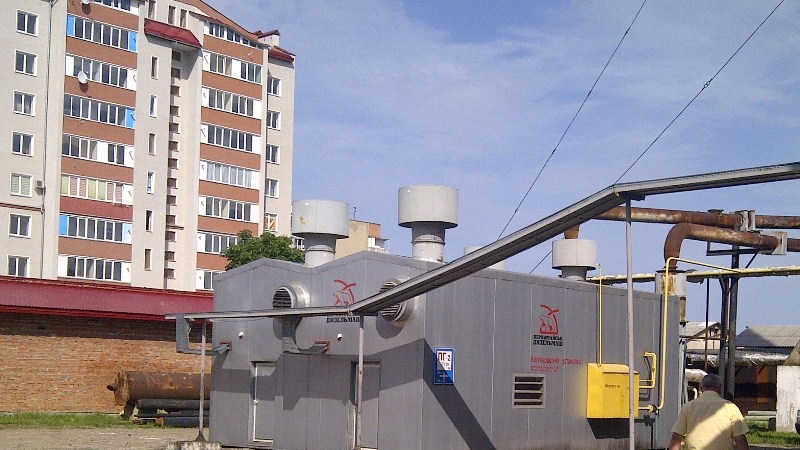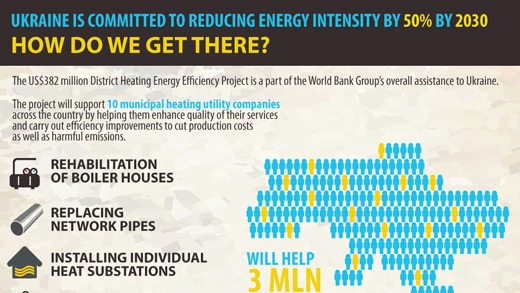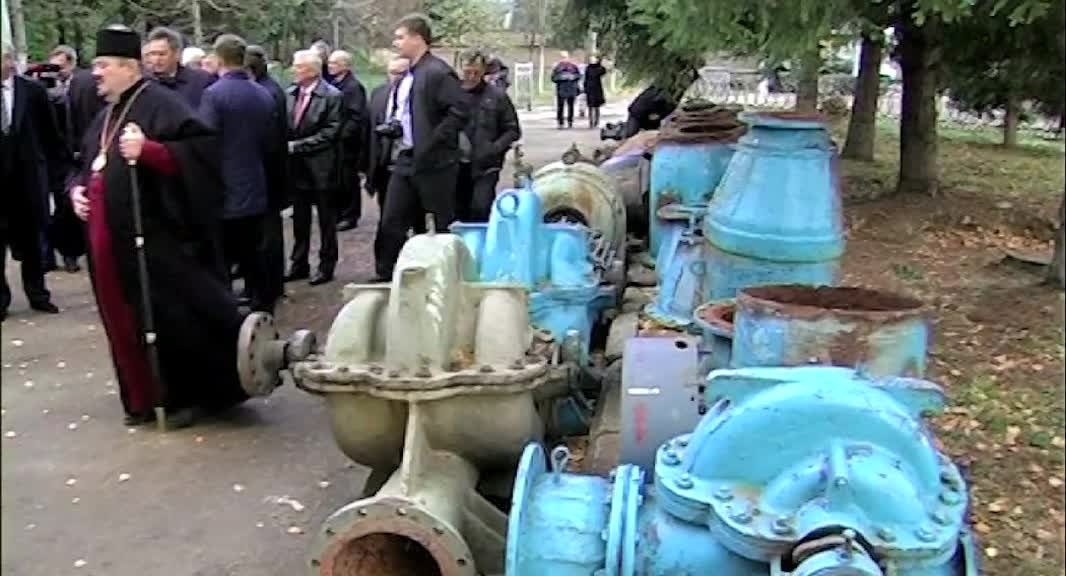“District heating has huge potential to save energy,” notes Yadviga Semikolenova, Senior Energy Economist at the World Bank and project lead for a newly introduced District Heating Energy Efficiency project in the country. “With targeted investments like the ones being introduced now, we have an opportunity to not only boost viability of these companies and improve quality of their services, but also increase energy efficiency, reduce CO2 emissions, and improve the country’s energy security.”
“It’s a triple win,” concludes Semikolenova, “for the government, utilities, and, most importantly, Ukrainian citizens.”
Given the potential economic and environmental gains made possible by increasing energy efficiency – particularly in district heating companies around the country – the World Bank has approved a new, $382 million District Heating Energy Efficiency Project. This project includes $50 million in support from the Clean Technology Fund.
This project focuses on the rehabilitation of boiler houses, replacing network pipes, and installing individual heat substations and building-level heat meters, with the overall aim of increasing efficiency of these district heating companies. In doing so, this project will help in reducing costs, enhancing reliability of service, and improving overall quality of the heat supplied to over 3 million Ukrainians.
The highly-concessional investments from the CTF will also have a transformational impact on the district heating sector of Ukraine by facilitating a large scale installation of Individual Heat Substations. Heat consumption of residential buildings will decline by about 20%, decreasing heat generation and gas needs of district heating companies around the country, while quality of the services provided by these companies will significantly improve.
This six-year project focuses on 10 district heating companies around the entire country, helping to increase their transparency, build their capacity, and boost their economic sustainability. The project is expected to result in savings of more than 37,000 thousand cubic meters of gas over the project’s lifespan, while simultaneously helping these companies become profitable. A key component of this project is a “break-even covenant” – a condition that stipulates that these companies should be able to generate enough revenues to cover their costs by the third year of the project.
In addition to the increases in efficiency, this project will also contribute to a significant reduction in greenhouse gas emissions across Ukraine. Savings from natural gas and electricity consumption will reduce CO2 emissions in the 10 cities where this project is being implemented. Collectively, the energy efficiency components in this project are expected to result in the reduction of more than 330,000 tons of CO2 gases by the end of the project – the equivalent of taking more than 64,000 cars off the road for an entire year.
This focus on energy efficiency in district heating highlights Ukraine’s commitment to the goal of halving energy intensity in the country in less than two decades. By implementing a project that simultaneously increases energy efficiency, improves delivery of vital services, and decreases greenhouse gas emissions, Ukraine is not only proving its commitment to reducing energy intensity, it is also proving its commitment to improving the livelihoods of all Ukrainians in the process.




